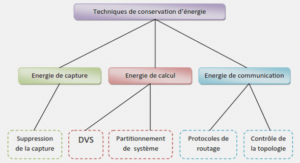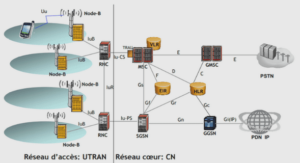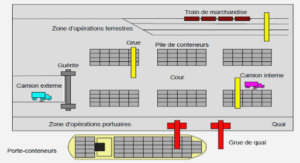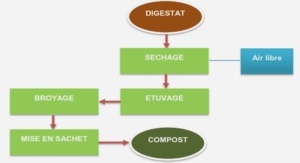Numerical simulation of flow over stepped spillways with non uniform
Energy dissipation over dam spillways is usually achieved by a standard stilling basin at the downstream end of the spillway where a hydraulic jump is created to dissipate a large amount of energy in supercritical flow. Water flowing over a stepped chute can dissipate a major proportion of its energy. A stepped spillway is a modified chute spillway, in which the surface of spillway is provided with a series of steps from near the crest to the toe of the structure. The steps act as large rough elements which increase the air entrainment, the flow resistance and the energy dissipation significantly. The size of the downstream stilling basin can be reduced and the construction is cheaper (Rajaratnam, 1990 and Christodoulou, 1993). In addition, the cavitation risk is minimised due to the large amount of entrained air. Stepped spillways have become a popular method for flood releases at roller compacted concrete (RCC) dams and gabions dams. The compatibility of the stepped spillway design with RCC construction techniques results in low additional cost for the spillway.
A large number of studies demonstrate that the flow over stepped spillway can be divided into three flow regimes, i.e. nappe flow, transition flow and skimming flow regimes with increasing discharge. The changes between flow regimes depend on the spillway configuration including the channel slope, the step height and the discharge. In nappe flow, usually found on large steps or at low discharges, a free-falling jet impacts from step to step with a fully aerated nappe cavity. Skimming flows occur on small steps or at high discharges. The transition occurs at discharges higher than the maximum required for nappe flow but lower than for the onset of skimming flow ( hanson 1994b and Ohtsu, and Yasuda, 1997).
The Software FLUENT
Fluent Version 6.3 is a CFD computer code developed and marketed by Fluent Inc. (2006). The code solves the equations for conservation of mass, momentum and energy for single phase flow or multiphase flow using a Finite Volume technique. Different types of discretization schemes (Quadratic upwind differencing scheme (QUICK), First Order upwind scheme, Second Order upwind scheme, Power Law etc.) are available in it. A number of turbulence models such as Spalart-Allmaras model, k – ε , Re-normalisation group (RNG) k – ε , realizable k – ε , k – ω model ,shear stress transport k – ω model, etc. are offered by this numerical code (Usman,2010). This code gives a number of models for simulation of two phases flow such as VOF, Mixture and Eulerian. First the fluid domain is divided into a large number of discrete control volumes (also known as cells) using a pre processor code which creates a computational mesh on which the equations can be solved. The meshing software available with Fluent is called Gambit. This software can create a two-dimensional (2D) surface mesh using triangular or quadrilateral elements, or a three-dimensional (3D) volume mesh using a combination of hexahedral, tetrahedral or prism elements.
Once the fluid domain has been meshed the governing equations (in integral form) for the conservation of mass, momentum, energy and any other relevant variables are applied to each discrete control volume and used to construct a set of non-linear algebraic equations for the discrete dependent variables. Fluent then solves the complete set of coupled equations for all the control volumes on the mesh using either a segregated solver or a coupled solver. In all the calculations reported here only the segregated solver has been used. In this approach the governing equations are solved sequentially. Since these equations are non-linear they first have to be linearized. This can be done either implicitly or explicitly, although when using the segregated solution method within Fluent the code automatically linearises each discrete governing equation implicitly with respect to that equation’s dependent variable. This produces a scalar system of equations containing only one equation per computational cell. A point implicit (Gauss-Siedel) linear equation solver is then used in conjunction with an algebraic multigrid (AMG) method to solve the resultant scalar system of equations for the dependent variable in each cell. Since the equations are non-linear several iterations of the solution loop must be performed before a converged solution is obtained (Fluent Inc 2006).
The segregated solver thus solves for a given fluid variable (for example u – the x component of velocity) by considering all cells at a single time. It then solves for the next fluid variable (for example v– the y component of velocity) by again considering all cells at the same time. Each iteration of the solution loop thus consists of the following steps:
1. The values of the fluid variables at the cell centers are updated based on the current solution values.
2. The ui velocity components of the momentum equation are each solved in turn using the current values for the pressure and the mass fluxes through each of the cell faces.
3. The pressure correction equation (a form of the continuity equation) is then solved to obtain the necessary corrections to the pressure and velocity fields so that the continuity equation is satisfied.
4. Where appropriate, additional scalar equations (such as those describing transport of turbulence quantities) are solved.
5. A check for convergence is made.
Multiphase flow model
A multiphase flow can be defined as a mixture of flow which consists of more than two phases. For the flow over stepped spillway, free surface flow with high turbulence of air is of interests. Both air and water cannot be ignored from the model because of their influence on the fluid dynamic behaviour. Then, in the numerical model, the multiphase flow model should be used in simulation. The multiphase flow model which available in FLUENT are Volume of Fluid model (VOF), Mixture multiphase flow model (MMF) and Eulerian model.
Volume of fluid (VOF) model
The VOF model was proposed by Hirt and Nichols (1981). The flow involves existence of a free surface between the flowing fluid and the atmospheric air above it. The flow is generally governed by the forces of gravity and inertia. In VOF model, a single set of momentum equations is solved for two or more immiscible fluids by tracking the volume fraction of each of the fluids throughout the domain. In each cell, the sum of the volume fractions of air and water is unity. So, an additional variable, the volume fraction of air or water is introduced. If αw denotes the volume fraction of water, then the volume fraction of air αa can be given as (Fluent Inc 2006): αa = 1 −αw
Mixture model
The mixture model is a simplified multiphase model that can be used to model multiphase flows where the phases move at different velocities, but assume local equilibrium over short spatial length scales. The coupling between the phases should be strong. It can also be used to model homogeneous multiphase flows with very strong coupling and the phases moving at the same velocity. In addition, the mixture model can be used to calculate non-Newtonian viscosity.
The mixture model can model phases (fluid or particulate) by solving the momentum, continuity, and energy equations for the mixture, the volume fraction equations for the secondary phases, and algebraic expressions for the relative velocities. Typical applications include sedimentation, cyclone separators, particle-laden flows with low loading, and bubbly flows where the gas volume fraction remains low. The mixture model is a good substitute for the full Eulerian multiphase model in several cases. A full multiphase model may not be feasible when there is a wide distribution of the particulate phase or when the interphase laws are unknown or their reliability can be questioned. A simpler model like the mixture model can perform as well as a full multiphase model while solving a smaller number of variables than the full multiphase model (Fluent Inc 2006). The mixture model allows you to select granular phases and calculates all properties of the granular phases. This is applicable for liquid-solid flows.
Turbulence models
The most fundamental approach for the turbulence study is the direct numerical simulation (DNS). The DNS solves the 3D Navier-Stokes equations directly without using any turbulence model. The results from the DNS are the most accurate when compared with the experimental data. However, the disadvantage of the DNS is the need of the extremely high computing capacity and CPU time. The DNS hence can be used only with a simple geometry and flows with low Reynolds numbers. The large eddy simulation (LES) is similar to the DNS but the model is used for the small eddies. The accuracy of the LES is consequently lower than the DNS. The approach considered in this work is Reynolds-averaged Navier-Stokes (RANS) turbulence modeling. The RANS turbulence model is suitable for the engineering problems. It has more advantage than the DNS and the LES in the sense that it requires less computational time and computing power. The most popular RANS model is the linear k – ε turbulence model.
Spalart-Allmaras model
The Spalart-Allmaras model is a relatively simple one-equation model as it solves only one equation for the kinematic eddy (turbulent) viscosity v. The Spalart-Allmaras model was designed specifically for aerospace applications involving wall-bounded flows and has been shown to give good results for boundary layers subjected to adverse pressure gradients. It is also gaining popularity for turbomachinery applications (Fluent Inc 2006).
Reynolds Stress Transport Model (RSM)
Out of all the RANS turbulence models, this is the most detailed turbulence model. It is based on non-isotropic behavior of the eddy viscosity. It is a seven equation model which solves seven transport equations for calculation of various terms in Reynolds stress tensor along with one equation for dissipation rate of ε. If the flow is 2D then five extra equations are resolved in this model. Although it gives very good results in complex flow situations but the time consumption and computational cost is much higher (Usman,2010). Despite its detailed treatment of turbulence, it might not always provide results better than simpler models like one and two equation turbulence models. Despite this fact, the modeler is bound to use this model for the flows with anisotropic.
Conclusion
Stepped spillways are characterised by a large energy dissipation and aeration performance. These features can be advantageous for designs of flood release facilities of hydraulic structures decreasing the size of the downstream stilling basin. The topic of the flow over stepped spillway was the object of several experimental works, with the development of computational fluid dynamics (CFD) branch, flow over stepped spillway can be simulated to validate experimental results.
|
Table des matières
Introduction
Chapter I: Bibliographic review
Introduction
I.1 Stepped spillway
I.2 Flow regime
I.2.1 Nappe flow
I.2.2Transition flow
I.2.3Skimming flow.
I.3 Air entrainment
I.3.1 Air entrainment in nappe flow
I.3.2 Air entrainment in transition flow
I.3.3 Air entrainment in skimming flow
I.4 Energy dissipation
I.4.1 Nappe Flow
I.4.2 Skimming flow
I.4.3 Comparison of energy dissipation between nappe and skimming flow……23
I.5 Numerical Model
Chapter II: Numerical modelling of multiphase flow
Introduction
II.1 The Software FLUENT
II.2 Governing equations
II.3 Multiphase flow model
II.3.1 Volume of fluid (VOF) model
II.3.2 Mixture model
II.3.3 Eulerian model
II.4 Turbulence models
II.4.1 Spalart-Allmaras model
II.4.2 Standard k -ε turbulence model
II.4.3 Re-normalisation group (RNG) k-ε Model
II.4.4 Realizable k-ε model
II.4.5 Standard – Model
II.4.6 Shear-Stress Transport (SST) – Model
II.4.7 Reynolds Stress Transport Model (RSM)
II.5 Near wall treatments
II.6 Finite volume method (FVM)
II.6.1 The steady state diffusion of a property ϕ
II.6.2 Steady-state convection and diffusion
II.6.3 Algorithms for pressure-velocity coupling
Chapter III: Numerical simulation of flow over stepped spillways with uniform
step height
Introduction
III.1 Stepped spillway model (Description of physical model)
III.2 Meshing the Geometry and boundary conditions
III.3Results and discussion
III.3.1 Flow regime
III.3.2 Inception point of air entrainment
III.3.3 Air concentration
III.3.4 Velocity distribution
III.3.4.1 Velocity profile upstream of the inception point
III.3.4.1 Velocity profile downstream of the inception point
III.3.5 Turbulence kinetic energy and turbulence dissipation
III.3.6 Pressure distribution
Chapter IV: Numerical simulation of flow over stepped spillways with non uniform
step height
Introduction
IV.1 Description of physical model
IV.2 Meshing the Geometry and boundary conditions
IV.3Results and discussions
IV.3.1 Void fraction and velocity profile
IV.3.2 Velocity distribution
IV.3.3 Turbulence kinetic energy
IV.3.3 Pressure distribution
Conclusion
![]() Télécharger le rapport complet
Télécharger le rapport complet






